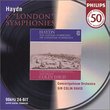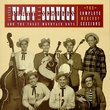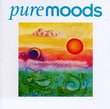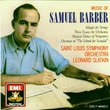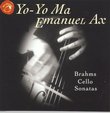| All Artists: Joseph Rheinberger, Wolfgang Rubsam Title: Rheinberger:Works for Organ, Vol. 1 Members Wishing: 0 Total Copies: 0 Label: Naxos Release Date: 11/30/1999 Genre: Classical Styles: Chamber Music, Forms & Genres, Sonatas, Historical Periods, Classical (c.1770-1830), Romantic (c.1820-1910) Number of Discs: 1 SwapaCD Credits: 1 UPC: 636943421222 |
Search - Joseph Rheinberger, Wolfgang Rubsam :: Rheinberger:Works for Organ, Vol. 1
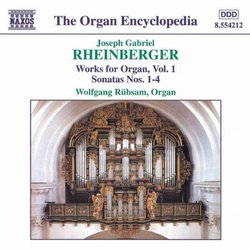 | Joseph Rheinberger, Wolfgang Rubsam Rheinberger:Works for Organ, Vol. 1 Genre: Classical
|
Larger Image |
CD DetailsSimilarly Requested CDs
|
CD ReviewsRich, Romantic Sound Avid Reader | Franklin, Tn | 08/19/2003 (5 out of 5 stars) "I have returned to edit a duplicate review (one is not allowed to delete a review after it has been submitted) explaining that yes, the CD was great and no, I did not mean to submit the same review twice.What is so outstanding about these 20 sonatas is the consumate artistry of the set. Along with their meticulous craftmanship they are also peculiarly "organistic" in a way that other organ works are not. Rheinberger was a musical genius encased in a rather parochial veneer. One cannot imagine this happily married devout Catholic engaging in shenanigans like Lizst, Beethoven or Wagner. The composer did not set out to cause waves but to make music. It is unfortunate that only his organ works are heard today, but at least we have that much. Many composers have now faded into oblivion, only to be remembered as footnotes.These twenty Sonatas, along with the two Organ Concertos, define the German Romantic Movement. His Peace Concerto, composed prior to WWI, evidenced a naive but noble belief that the nations of Europe could live in peace. Little did he realize that his own adopted land would be the instigator of two conflicts over the next four decades. Although the Sonatas evolve in complexity and style, their basic structure and style are set from the first - a strict sonata framerwork, a fast slow fast, and a concluding fugue. This does not imply a lack of originality since it is more difficult to demonstrate variety within a set form that establish new forms. The first Sonata in C Minor is majestic and again, utterly organistic. For example, Lizst's organ music always sounds like a piano, Saint-Saens a symphony and Handel's a harpsichord. The punctuated sounds of the bass, the virtuosity of writing for both hands and feet, the flowing harmonies with their semi-quaver rhythm (a Rheinberger hallmark) - all of these are present in the first Sonata.The only complaint concerns the Third Sonata. This work is magisterial and should be taken at a more stately pace than Rubsam allows. In parts, it sounds hurried. But this is a minor quibble with what is surely a definitive recording" Rich Romantic Sound Avid Reader | Franklin, Tn | 07/29/2003 (5 out of 5 stars) "What is so outstanding about these 20 sonatas is the consumate artistry of the set. Along with their meticulous craftmanship they are also peculiarly "organistic" in a way that other organ works are not. Rheinberger was a musical genius encased in a rather parochial veneer. One cannot imagine this happily married devout Catholic engaging in shenanigans like Lizst, Beethoven or Wagner. The composer did not set out to cause waves but to make music. It is unfortunate that only his organ works are heard today, but at least we have that much. Many composers have now faded into oblivion, only to be remembered as footnotes.These twenty Sonatas, along with the two Organ Concertos, define the German Romantic Movement. His Peace Concerto, composed prior to WWI, evidenced a naive but noble belief that the nations of Europe could live in peace. Little did he realize that his own adopted land would be the instigator of two conflicts over the next four decades. Although the Sonatas evolve in complexity and style, their basic structure and style are set from the first - a strict sonata framerwork, a fast slow fast, and a concluding fugue. This does not imply a lack of originality since it is more difficult to demonstrate variety within a set form that establish new forms. The first Sonata in C Minor is majestic and again, utterly organistic. For example, Lizst's organ music always sounds like a piano, Saint-Saens a symphony and Handel's a harpsichord. The punctuated sounds of the bass, the virtuosity of writing for both hands and feet, the flowing harmonies with their semi-quaver rhythm (a Rheinberger hallmark) - all of these are present in the first Sonata.The only complaint concerns the Third. This work is magisterial and should be taken at a more stately pace than Rubsam allows. In parts, it sounds hurried. But this is a minor quibble with what is surely a definitive recording"
|

 Track Listings (12) - Disc #1
Track Listings (12) - Disc #1

